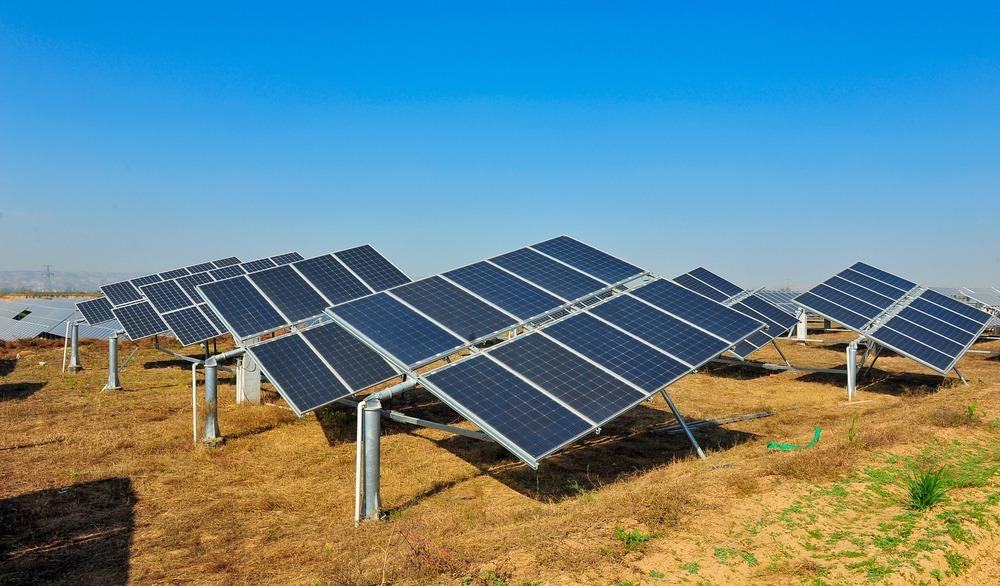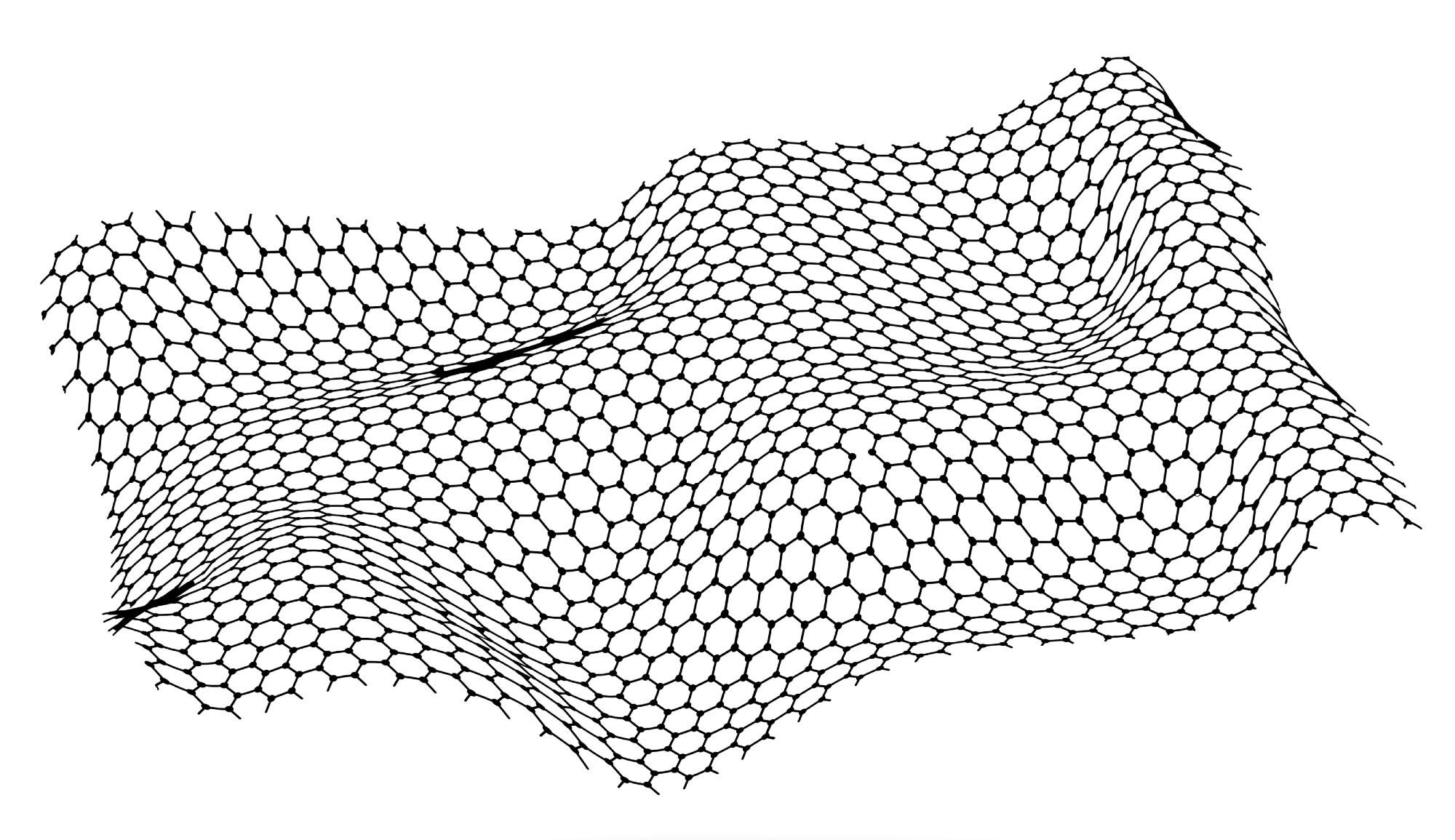近年来,更好地获取可再生能源已成为发展中国家的主要关注点。太阳能一直处于国家开发新技术的努力的最前沿,科学家一直在寻找开发有效的能源生成系统的新方法。石墨烯是一种单原子的碳,是一种相对较新的材料,因其有效能力而受到关注。

Image Credit: liu yangjun/Shutterstock.com
Scientists have been astounded by this nanomaterial's remarkable electrical characteristics, and its discoverers were awarded the Nobel Prize in 2010. Graphene has surpassed expectations and previous benchmarks as the world's strongest and lightest material since its development.
多年来研究材料后,科学家在研究材料后的生产中取得了显着改善,从而产生了多种生成材料的技术。由于其独特的特征,石墨烯对其在太阳能电池开发中的潜在应用引起了兴趣。
Indium tin oxide and silicon are currently utilized to make solar cells, but scientists have determined that they are inefficient and expensive in comparison to graphene. Because graphene is a more durable, conducive, and transparent material, it should be deployed to replace the conventional materials used in solar cells.
Properties of Graphene
Graphene is a carbon-based material whose atoms are organized in a hexagonal pattern. It has a graphite-like structure, yet its density is the same as carbon fiber, and it is up to five times lighter than aluminum. This nanomaterial is classified as 2D since its thickness is as thin as a carbon atom.
On the other hand, despite its thinness, it has a strength of up to 200 times that of steel. To the list of graphene's properties, we must add that it is a good conductor of heat and electricity, as well as transparent, waterproof, and flexible.
Graphene-based Dye-Sensitized Solar Cells
Researchers have examined the efficiency of graphene in solar cells by using it on a thin film-like photovoltaic cell known as a "dye-sensitized solar cell." The scientists changed the solar cell by adding a sheet of graphene and covering it with indium tin oxide and plastic transparent backing.
The use of graphene in solar panels is not new, as it was created as a non-reflective covering for solar cells. Since researchers are pushing graphene's capabilities to gather energy from renewable sources, they have been able to generate thousands of microvolts while achieving a solar panel efficiency of 6.53 percent.
Synthesis of Graphene for Solar Cells
One of the most important means of producing graphene is using the Scotch Tape Method. Other methods include CVD and recently found experimental approaches that expose the graphene material to a range of temperature variations. The Scotch Tape Method was utilized by the two scientists who were responsible for the discovery of graphene in the first place.

图片来源:我的投资组合/Shutterstock.com
科学家使用正常的胶带用纯石墨剥去石墨烯层,直到仅保留一层石墨烯为止。由于材料的不透明度,在将胶带成分溶解在丙酮中并干燥后,可以在显微镜下检测石墨烯。
Although this is the most frequent way of generating graphene, it is not suited for the fabrication of solar cells. Although small, even a few layers of graphene would be ideal for solar cell production. This method allows scientists to quickly experiment with the material to discover new methods to improve its performance.
化学蒸气处置(CVD)似乎是在太阳能电池中生产石墨烯的最合适的方法。气体反应物在金属底物上的沉积称为CVD。
Carbon gas molecules are heated in a reaction chamber, and when they come into contact with the chamber's substrate, "a reaction happens that generates a material layer on the substrate surface." The temperature of the substrate determines the type of reaction that will take place, and the substrate is normally covered with graphene at a slow rate, adding microns of graphene every hour. CVD produces high-quality graphene that is extremely pure while still being low-cost.
Advantages of Graphene-based Solar Cells
由于石墨烯片非常薄,因此生产石墨烯太阳能电池只需要最少的原材料数量,从而大大降低了价格。欧洲杯足球竞彩由于其灵活性,科学家已经能够开发出硅无法生成的广泛的太阳能电池。
This might result in technological breakthroughs that have never been seen before. Graphene's transparency and flexibility make it ideal for solar use in spaceflight and aircraft, and these properties might make flexible solar cell installation easier. There are a lot of possibilities when it comes to adapting graphene to solar cells because of its physical and electrical qualities, and its usage would be extremely useful to individuals who consume a lot of energy.
石墨烯是一种分层物质,可以操纵以制造几种太阳能电池。科学家使用这种原子厚的物质的两层用石墨烯制作了非常小的太阳能电池板。这些设备只能以1%至2%的效率将光子转换为电能,但是这些层可能会分层以提高材料的效率。堆叠石墨烯可能会使其效率更接近硅太阳能电池,即15%至20%。
Owing to its numerous advantages, companies should make graphene their go-to material in the production of solar cells since it will allow for highly efficient absorption of energy that will outperform present materials.
超薄石墨烯中的低温电阻
References and Further Reading
A. Altuntepe, A. Seyhan, and R. Zan, “Graphene for Si-based solar cells,”J. Mol. Struct.,卷。1200,2020,doi:10.1016/j.molstruc.2019.127055。https://ur.booksc.eu/book/76924118/ad7404
K. Kumar和B. C. Yadav,“化学蒸气沉积技术对石墨烯合成的重要性的概述,”Adv. Sci. Eng. Med.,卷。10, no. 7, pp. 760–763, 2018, doi: 10.1166/asem.2018.2241.https://www.ingentaconnect.com/contentone/asp/asem/2018/00000010/f0020007/art00025
H. Wang,T。Maiyalagan和X. Wang,“综述了氮掺杂石墨烯的最新进展:合成,表征及其潜在应用,”ACS Catal.,卷。2, no. 5, pp. 781–794, 2012, doi: 10.1021/cs200652y.https://pubs.acs.org/doi/10.1021/cs200652y
X. Miao等。, Nano Lett.,2012,12,2745 High Efficiency Graphene Solar Cells by Chemical Doping.pdf,” pp. 6–11, 2012.https://pubs.acs.org/doi/10.1021/nl204414u
免责声明:此处表达的观点是以其私人身份表达的作者的观点,不一定代表AZOM.com的观点有限的T/A Azonetwork本网站的所有者和运营商。此免责声明构成了条款和条件使用此网站。